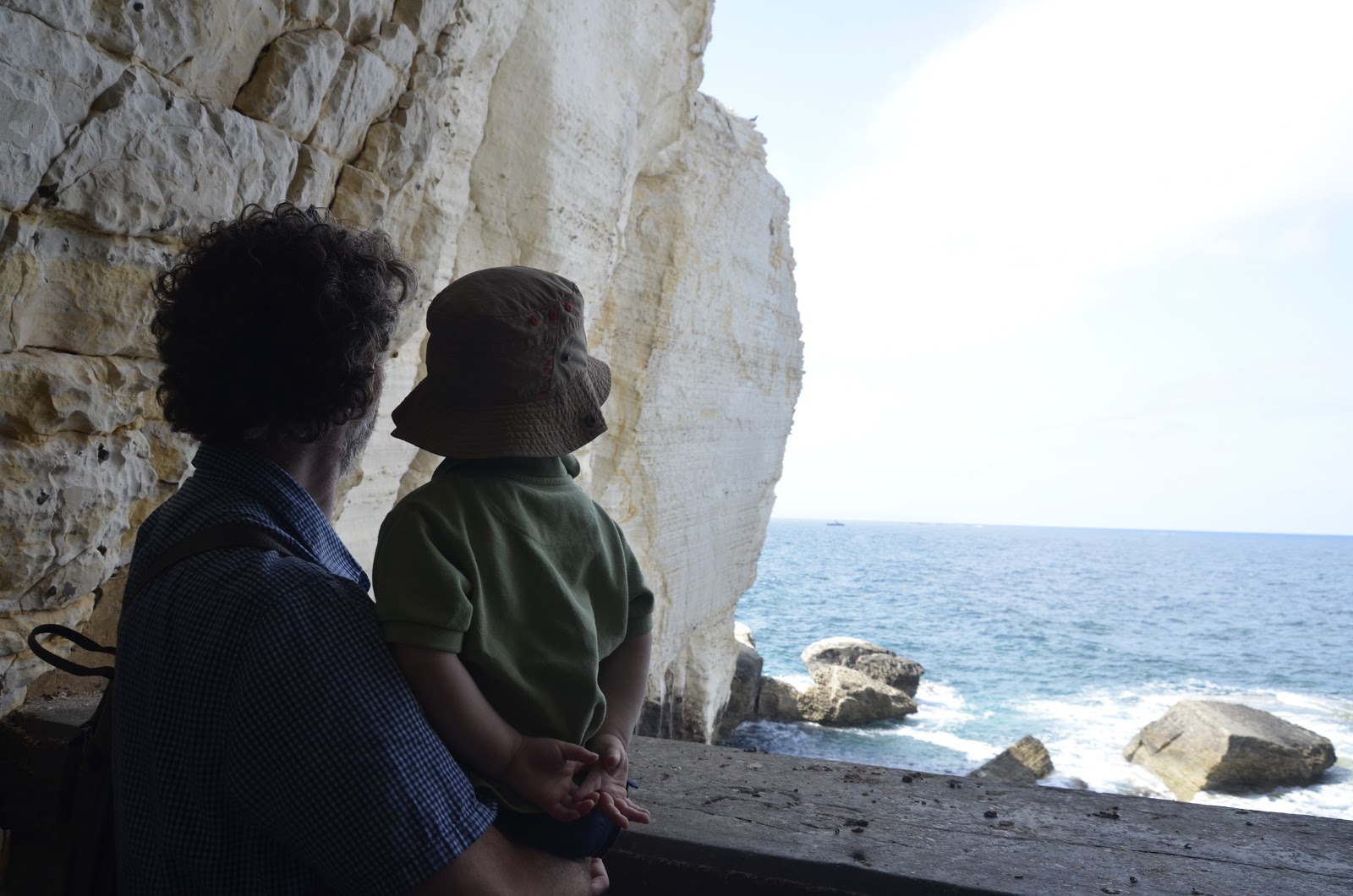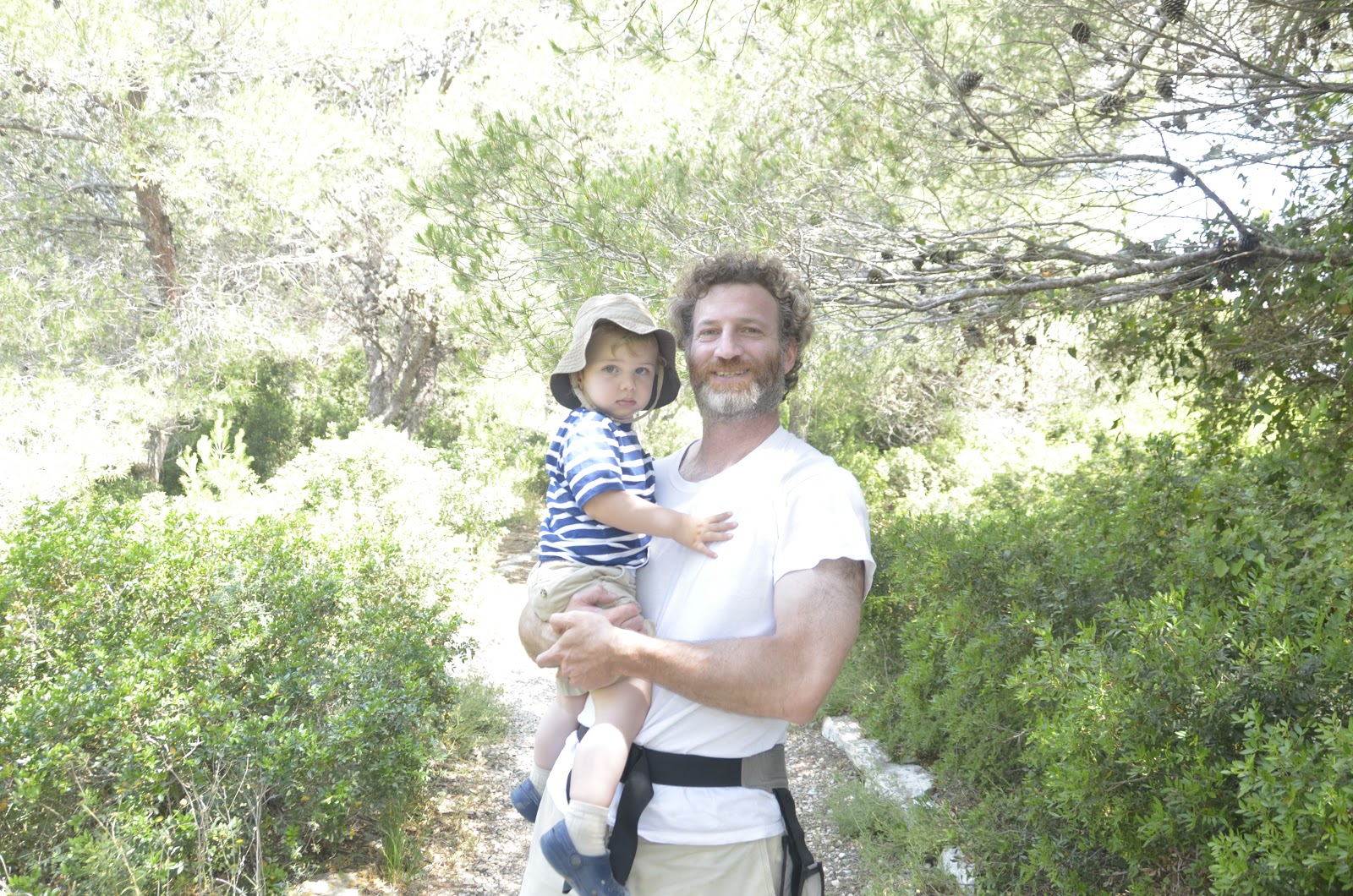A few people have asked me to write about the food we're eating here in Israel, and my initial thinking in response to those queries is that I don't have anything interesting to write, because we really don't eat all that differently here than we do at home -- except that we probably eat a wider variety of foods at home. Still, after thinking it over, I realize that things actually are a little different in our Jerusalem kitchen, and in subtle ways our meals are influenced by what's available in the markets here.
I'm in no position to make broad statements about Israeli or Middle Eastern food (I'll have to come back here without my kids next time to get out to many more markets and restaurants before I can have any real authority on Israeli cuisine!), but I can make a few observations. I do know that due to Israel's geographic location and the fact that it is a country of immigrants from all over the world, the food here is eclectic and influenced by many cultures. As in any major city, you can get pretty much any kind of food here that you want, from sushi to pizza, Israeli-Asian fusion to McDonald's. There are several shops within walking distance of our house where we can get pretty much any American food we want, including boxed mac & cheese and organic baby food.
That said, there are a few trademark foods here in Israel. First, of course, is hummus. It's pretty much everywhere, and I don't think you'll sit down at many Israeli meals where there isn't a bowl of hummus, and probably tahini, along with a heaping basket of pita bread to dip it in. You're also likely to see olives and other assorted pickled foods, dried fruits, and tapenades and dressings. Speaking of dressings, in my opinion the best part of Israeli cuisine is the salads. For some reason, they really know how to do salads over here. From upscale restaurants to touristy dives to any domestic dinner table we've sat down at in this country, we've always found delicious, fresh salads. As far as I can tell, this comes from three things: excellent dressings (why are their dressings so much tastier than American dressings? I have no clue, but I want to bring home basically every salad dressing I try here...); simple but excellent combinations of vegetables, grains and beans; and the fact that most salad vegetables are very finely chopped (this makes for great texture and blending of flavors).
The basic Israeli salad doesn't involve lettuce; usually it's a combination of chopped tomatoes, cucumbers, onion (or some onion variant like scallions or chives), lemon and salt. It's delicious eaten on its own, and fantastic put in a pita with hummus. Or stuffed into a pita with cabbage, tahini, and falafel (another great Israeli food, and Eric's favorite: basically, it's fried balls of chick peas, garlic, and spices). We make some variation of Israeli salad most days. Often, as I stated in one of my first posts, I add cracked wheat, parsley, mint, and maybe some white beans to make more of a tabbouleh salad: tabbouleh is a more substantial salad and is great as a topping for a sandwich, or a side dish at dinner. Here are the ingredients for the tabbouleh salad we had earlier this week, which we ate with zucchini fritters.


Lately, we've also been making a lot of couscous, which we eat frequently at home, but is also very popular here. Our latest couscous recipe is one I found in a vegetarian cookbook on the shelf of our house here: we've been eating it with sauteed onion, chick peas, chopped spinach, tomatoes, and whatever spices we have available (lately, a miscellaneous but delicious bag of spices we picked up at the shuk). Alexander loves to "mix" (one of his new words) the couscous together, and luckily, he loves to eat it, too!




We make tabbouleh and couscous and eat hummus and dried fruit at home; the difference here is that we eat those things more regularly, and by and large, they taste better. I'm not the most inventive cook, and here, just like at home, I prefer to cook vegetarian meals like soups, salads, quiches, stir frys and pasta dishes. We do get an occasional chicken here (which Alexander loves), but other than that, we don't eat much meat. Our kitchen is fairly well-equipped, but we don't have all the appliances we have at home, and since our oven is small and the weather is warm, we're not really doing any baking. But I'm really enjoying all the chopping and mixing we do to make our simple dinners.
Here, hummus and olives are on our table at basically every meal (and surprisingly, Alexander really loves olives!), and we buy pita bread almost every day. When it's fresh, it's soft and doughy and delicious with pretty much anything (including Nutella); we still can't figure out why you can't get decent pita bread at home. But in Jerusalem, it definitely makes a difference to get your breads and produce fresh. There are no preservatives in anything you get at the local bakeries, so after about a day, bread starts to get stale. And here, vegetables are clearly not treated the same way they are in most mainstream American supermarkets; if you walk down the produce aisles in Jerusalem, you notice that vegetables here don't have the pristine, unblemished look we're so used to seeing at home (and which, of course, requires a lot of pesticides and/or a lot of special treatment, including flash freezing and other methods of preservation). Vegetables in the grocery stores here still have some dirt on them, usually have some bumps and bruises, and don't last very long in the fridge (thus we go shopping on average two times a week). But, the thing is: vegetables here, for the most part, taste better. The tomatoes in the cous cous dish pictured above were so sweet Alexander was eating them like candy. The carrots I've eaten here are also much sweeter than anything I find in the store at home. The fruit is fantastic. And the avocados? They are huge, creamy, and delicious. Now, I have no doubt that most mainstream Israeli farmers use pesticides, so it's not as if the vegetables here are perfectly grown, but I also think the produce gets from the garden to our table a lot faster here than it does at home; you can tell the difference in the taste.
One more note on our eating habits: just because we eat mostly vegetarian fare doesn't mean we are always eating healthy! Everyone in our house has a sweet tooth, and I have to admit that most days, Eric and I follow up our healthy dinners with a pastry or two. We figure we're burning it off with all the walking we do! Here's Eric enjoying one of our favorite treats: a chocolate eclair from the bakery up on Berlin Street.

So, as it turns out, I had more to say about the food here than I originally thought. I think at the end of the day, preparing meals makes me feel like we're putting a little bit of order into our daily routine, which, with two children under two, sometimes feels very chaotic. In this past week, especially, Eric and I have been feeling pretty frayed. Both boys are going through crazy developmental stages, and neither of them is sleeping easily. Benjamin, who is getting his first teeth, trying out new foods, and getting close to rocking on all fours, wakes up at all hours wanting nourishment or nurturing, and Alexander -- I don't even know what is going on with him -- but it must be some kind of separation anxiety, because all of a sudden, getting him to bed at nap time and at night has turned into an exhausting, epic battle. (By the way, if anyone has any suggestions of how to get an almost-two-year-old to bed, we'll take any advice we can get!).
So the orderly cooking photos you see above? Eric and I were laughing as we set them up, because really, most of our meals don't really look so well-organized. About ten minutes after we took that photo of the cous cous and chicken, there was cous cous from one end of our kitchen to the other, Benjamin was spitting his carrots all over himself and me, Alexander was stealing Eric's plate and throwing cups and the floor, and.... well, anyone who's been around small kids knows the scene. Later on in the evening, Alexander knocked Eric's camera off the counter onto the tile floor. And in the past week, both boys have fallen out of their beds. It's feeling fairly crazy around here, so the least we can do is try to put a good meal on the table. And as we prepare those meals, it's fun to include as much of the local fare as we can.
























































